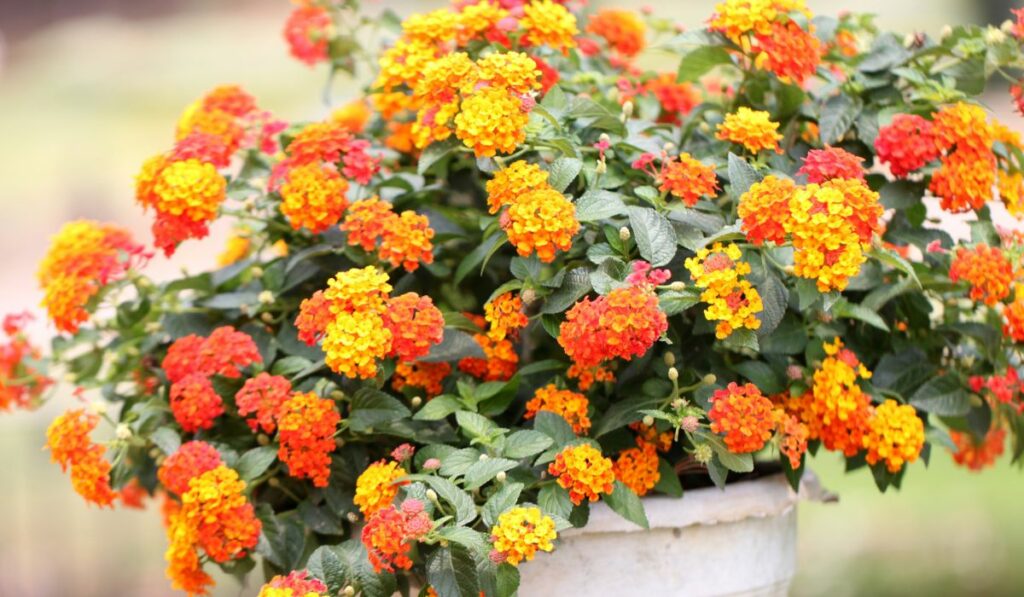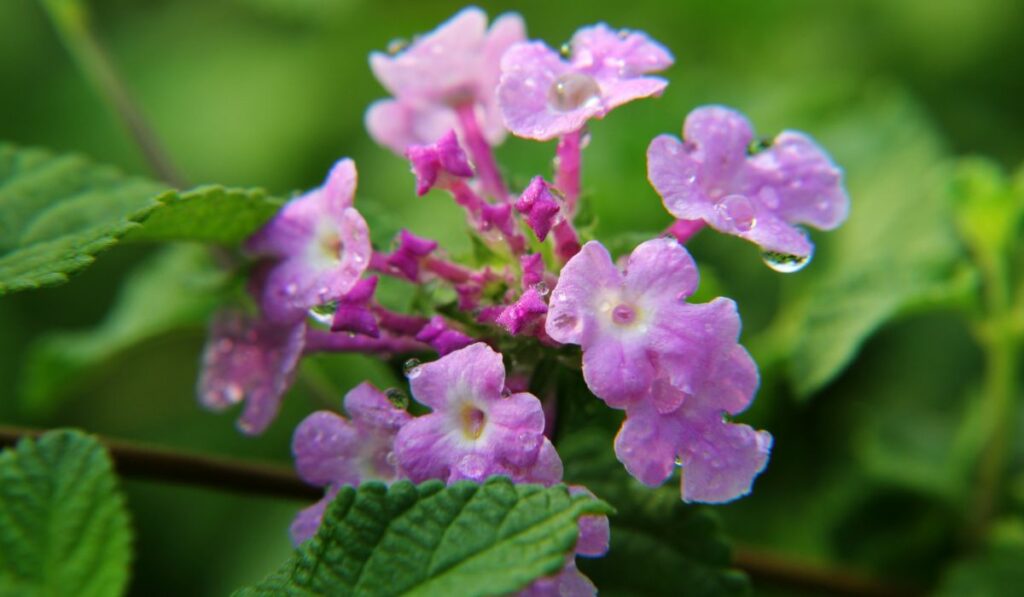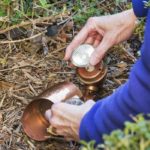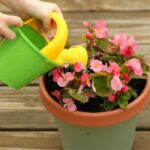Lantana plants have an extended and bright bloom that adds a burst of color to your garden. They come in multiple varieties, offering various colors, including lavender, orange, and white. You can grow lantana in your garden soil or in pots. Some trailing types can also grow in hanging baskets. But regardless of the method you choose, watering is an essential part of this species’ care.
Freshly planted lantanas require frequent watering to promote root development. Once established, these drought-tolerant plants require minimal maintenance. They perform best with approximately an inch of water weekly. Water your lantana plants regularly to ensure steady growth and bloom.
Determining the right amount of water for your plants can be really tough. And although overwatering can cause issues such as root rot, giving your lantana plants too little water affects flower and foliage growth. So, let’s take a look at how to find the sweet spot as well as some other care tips for your lantana plants.
Caring for Lantana

Growing and caring for lantana is generally quite easy. However, it does require regular pruning. These low-maintenance plants can blossom all year round in warm areas. Their blossoms often have multiple hues, creating a dramatic effect.
Plant lantana in fall for the best flowering. Lantana may flourish in partial shade, but bloom quantity decreases, and plants become more prone to diseases and pests. Growing lantana does not need extensive soil preparation before planting.
These consistent bloomers thrive in any well-drained soil, including sandy soil. Use a commercial soil-less mix formula for container planting.
Pruning
It’s best to prune lantana many times throughout the growing season. If you live in an area with harsh winters, shear the plants lightly after flowering to promote stem branching and flower production. Use sharp hand pruners (on Amazon) to prune overgrown lantana plants. You can cut up to a third of the plant’s size in each pruning.
Prepare lantana for extreme winter cold by pruning stems in spring. Water and fertilize plants after pruning to encourage new growth. Once branches show six inches of new growth, cut the tips to promote branching.
As part of your lantana maintenance, you should remove any developing berries. To keep your lantana free of berries, cut down the plant after it has bloomed heavily. This is crucial if you’re cultivating Lantana Camara or other invasive species.
How Often Should You Water Lantana?
Lantana thrives in humid conditions and moderately moist soil. The watering frequency needed for healthy growth varies depending on soil type and location conditions.
Growing lantana in containers confines roots and limits the soil area for water retention. Potted lantanas usually need watering every day or two in hot places or twice weekly in humid regions.
Determine the watering needs of potted lantana plants by inserting your finger into the soil. If the ground feels dry, it’s time to hydrate the plant. Plants in hanging baskets have exposed roots, needing more frequent watering than in-ground ones. Plants grown in the ground, on the other hand, can spread their roots out and actively look for water.
During their flowering period, you should water them once a week. Ensure the soil is well-drained; if it is too compacted, weekly irrigation might lead to boggy conditions and root rot.
Cover the plant’s roots with a layer of organic mulch to keep the soil wet and promote the slow release of nutrients. Mulch is essential in hot and dry areas, and it can assist in lengthening the growing season in colder climates by keeping the heat in the soil.
Avoid watering your potted or in-ground plants directly from above since this might encourage fungal development and lead to foliar illnesses.
More Tips on Watering
Checking the top half an inch of soil for the moisture is the easiest method to tell how often to water your lantana plant. The lantana plant should be watered if the soil appears dry. Watering the established lantana plant is unnecessary if the top half an inch of soil is still damp or moist.
Here are some valuable tips on lantana watering:
- Water outdoor lantana plants a few times each week.
- Water lantana plants early in the morning.
- Take extra caution not to overwater indoor plants.
- Consider rainfall when watering during rainy spring months.
- Look out for signs of under- or overwatering, like wilting.
- Ensure potted lantanas are in containers with adequate draining.
Can You Save an Overwatered Lantana?

Overwatering lantana is a significant challenge for many gardeners. You may be overweatering your plants if they show:
- Wilting: Droopy leaves and limp stalks.
- Discolored leaves: Leaves curl up, turning yellow or developing spots at tips.
- Stunted growth: Buds fail to develop, leading to slow blooms.
- Fungal infections: Mold or fungal infection on the stem, leaves, and soil.
Giving your lantanas excess water makes them unsightly, weak, and vulnerable to diseases.
How to Save Overwatered Lantana Plants
Follow the steps below to keep your overwatered lantana from dying:
- Drain excess water: If the pot is flooded, tilt the container and remove excess water.
- Avoid watering for a while: Don’t water the plant until the soil dries out.
- Check drainage: Ensure your pot has functional drainage holes.
- Treat root rot immediately: Check for and cut any decaying roots.
- Swap the potting soil: Transplant the lantana into fresh, well-drained soil.
- Change the pot’s size: If your plant is small, get a proportional container (on Amazon).
- Do not fertilize the plant: Avoid feeding overwatered plants with fertilizer.
- Aerate soggy soil: Make tiny holes in waterlogged soil using a chopstick.
Use these tips to keep your lantana from drowning. To grow beautiful, blooming lantana plants in your garden, give them plenty of room to spread out and thrive.


![How Often Do You Need To Water Sage? [+ Growing Tips] How Often Do You Need To Water Sage? [+ Growing Tips]](https://yourdiybackyard.com/wp-content/uploads/2022/09/Fresh-herbal-sage-in-a-plant-pot-in-the-garden-150x150.jpg)





